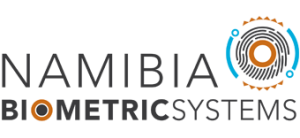What you didn’t know about Biometrics: System Limitations
Securing biometric information and ensuring the privacy of personal identities is a growing concern in today’s society. Our previous articles have highlighted the limitations of tradition authentication schemes. Traditional authentication schemes mainly utilize tokens or depend on some secret knowledge possessed by the user for verifying his or her identity. These traditional based techniques have been very popular and have several limitations. Traditional based approaches such as token and knowledge-based approaches cannot differentiate between an authorized user and a person having access to the tokens or passwords. Knowledge-based authentication systems require user to remember and manage multiple passwords/pin numbers which results in user inconvenience. The limitations of traditional authentication methods can easily be overcome by biometrics-based authentication schemes using fingerprints, face recognition, etc., while offering usability advantages such as user convenience as the user does not have to remember multiple passwords and their associated cards. It is likely that most people who hold more than one bank card have mixed up their pin numbers. However, despite its obvious advantages, the use of biometrics raises several security and privacy concerns as outlined below:
Biometrics is authentic but not secret: Unlike passwords and cryptographic keys that are known only to the user, biometrics such as voice, face, signature, and even fingerprints can be easily recorded and potentially misused without the user’s consent. There have been several instances where artificial fingerprints [14] have been used to circumvent biometric security
Biometrics is taking the Military by storm, both as a tool to fight war on the battlefield and as a way for efficient business practices. Biometrics is now becoming an integral part of a soldier’s mission, allowing troops to identify potential threats and confirm the link between name and face.
Biometrics can enable the Military to achieve the followings:
- To identify an individual and associate that individual with certain actions.
- To identify individuals’ associates and their activities or what they have been involved in.
- To link events such as an improvised explosive device at one place and another and to assist build a picture of what has happened.
The modern warfare takes place in urban environments, unlike conventional warfare where the two sides face each other on the battlefield using weapons against each other. The Military needs to re-think how to approach warfare.
In the event that improvised explosive devices would be discovered by the Military at various locations, the Military could take the following actions:
- Enrol the Fingerprints found on the improved explosive devices into the database. Record vital information such as location, number of prints etc.
- Search for a match against available criminal database. If a match is found, then they know the perpetrators.
- If a match is not found, the Military can set up operations within the area where live biometric samples are obtained from individuals and compared against the stored fingerprints found on the improvised explosive devices.
Biometrics can be used in an effort to combat insurgent forces interspersed within an indigenous population. Therefore biometric identification and tracking of individuals becomes a core mission in such a war.
In addition to the above, the Military can use biometrics in its own facilities as a type of universal access: every member of the Military, their families and civilian employees have a common access identification card that is embedded with their fingerprints.
For example:
- Use biometric technology to clear veterans who are receiving treatment at the veteran’s clinic for access to the base hospital.
- Use biometric technology to provide keyless entry to sensitive areas.
- Use biometric technology to confirm identities as they board foreign ships.
More information on the implementation of biometrics based solutions can be requested from info@namibiabiometricsystems.com
